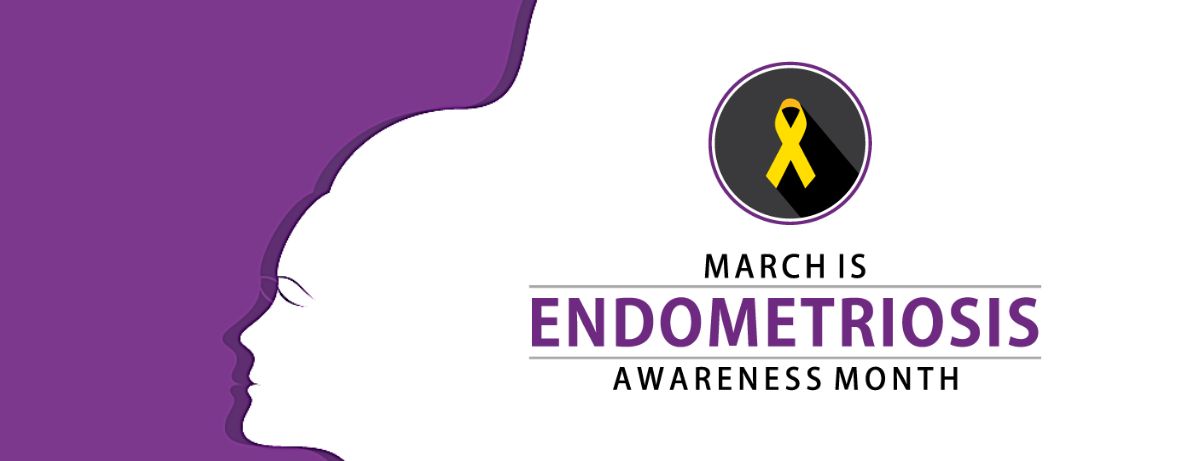Understanding Endometriosis

Endometriosis is a condition in which the tissue that normally lines the inside of the uterus (the endometrium) grows outside of the uterus, most commonly on the ovaries, fallopian tubes and the tissue lining the pelvis.
This tissue can also appear on the bladder, bowel, and in rare cases, in other parts of the body. The displaced endometrial tissue continues to act as it normally would—it thickens, breaks down, and bleeds with each menstrual cycle. However, because the tissue has no way to exit the body, it becomes trapped. This can cause inflammation, pain, and the formation of scar tissue. Endometriosis can also lead to infertility.
Who is at risk?
Endometriosis is a common condition that affects an estimated 10-15 percent of reproductive-aged women. However, certain factors may increase a woman’s risk of developing endometriosis. These include:
- Having a family history of endometriosis. If a woman’s mother or sister has endometriosis, her risk of developing the condition is higher.
- Starting menstruation at an early age. The risk of endometriosis increases for women who begin menstruating before the age of 11.
- Having irregular menstrual cycles. Women with cycles shorter than 27 days or longer than 32 days may be at a higher risk.
- Having a condition called retrograde menstruation, in which menstrual blood flows back through the fallopian tubes and into the pelvic cavity instead of out of the body, which can increase the chance of endometrial tissue growing outside the uterus.
- Having certain immune system disorders, like an autoimmune disorder or allergies.
- Having a history of pelvic inflammatory disease
It’s worth noting that having one or more of these risk factors doesn’t mean that a woman will definitely develop endometriosis, and many women with endometriosis have no known risk factors.
What are the symptoms?
The symptoms of endometriosis can vary from person to person, and some women may have no symptoms at all. However, the most common symptoms of endometriosis include:
- Painful periods (dysmenorrhea): This can be a dull or sharp pain that starts before or during a woman’s period, and may last for several days.
- Pelvic pain: This can be a constant or intermittent pain that occurs in the lower abdomen, back, or pelvis. It may be more severe during periods and may also be present during sexual intercourse.
- Infertility: Endometriosis can cause the formation of scar tissue and adhesions, which can make it difficult for eggs to travel through the fallopian tubes and fertilization to occur.
- Heavy or irregular menstrual bleeding
- Fatigue, diarrhea, constipation, bloating, or nausea, especially during menstrual periods
- Low back pain or leg pain
These symptoms can also be caused by other conditions and a proper diagnosis can only be made by a doctor after a thorough examination.
What if I suspect I have endometriosis?
If you suspect you have endometriosis, it’s important to schedule an appointment with your health care provider. They will take your medical history, perform a physical examination, and may also order some tests to confirm the diagnosis.
“The good news is that after an accurate diagnosis, endometriosis can be precisely removed using minimally invasive surgery techniques including mini/micro laparoscopy, laparoscopy with Co2 laser, or robotic surgery to help resolve the patients’ pain or fertility issues and restore her normal life and relationships,” said Brown & Toland gynecologic surgeon Dr. Mona Orady. “If endometriosis is also involving multiple organs, I often will use a team of surgeons to completely remove the disease.”
In the meantime, it’s a good idea to keep a journal of your symptoms to share with your doctor, including the location and severity of any pain, when it occurs, and any other symptoms you may be experiencing.
What are the available treatments?
There are several treatment options available for endometriosis, and the best course of action will depend on the severity of the condition and the patient’s goals. Some of the latest treatment options include:
- Medications: Hormonal medications, such as birth control pills, can help to reduce the growth of endometrial tissue and decrease pain. Gonadotropin-releasing hormone agonists (GnRH agonists) can also be used to suppress ovulation, which can help to reduce endometrial growth and pain.
- Surgery: Laparoscopic surgery is a minimally invasive procedure that can remove endometrial tissue and any scar tissue that may be present. Some of the latest techniques include laser surgery, which uses high-energy light to vaporize the endometrial tissue and also reduces bleeding, and robotic surgery which offers more precision and control to the surgeon.
- Integrative therapies: There are some integrative therapies that have been proposed to help alleviate symptoms of endometriosis, such as acupuncture, physical therapy, and dietary changes. These therapies may be used in conjunction with medical treatments.
It’s important to note that some of these treatments may have side effects, and it’s essential to discuss the risks and benefits with your doctor.
It’s also worth mentioning that endometriosis can be a chronic condition, and even with treatment, symptoms may recur. In this case, patients and their doctor will have to reevaluate the treatment plan and possibly change it.
MEDICAL DISCLAIMER: The content of this Website or Blog is not intended to be a substitute for professional medical advice, diagnosis, or treatment. Always seek the advice of your physician or other qualified health provider with any questions you may have regarding a medical condition. Never disregard professional medical advice or delay in seeking it because of something you have read on this Website or Blog.
If you think you may have a medical emergency, call 911 immediately, call your doctor, or go to the emergency room/urgent care.
